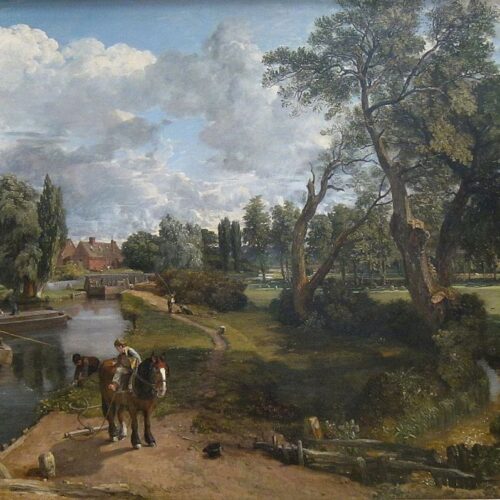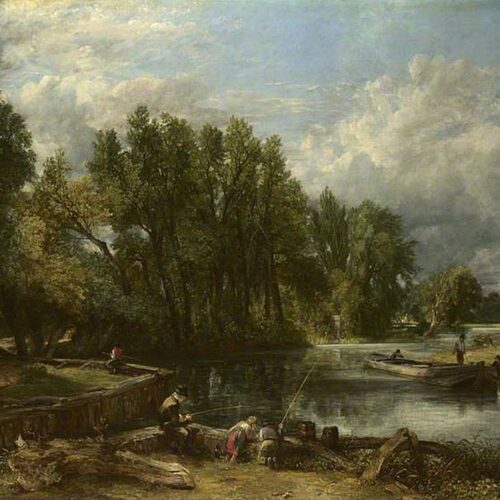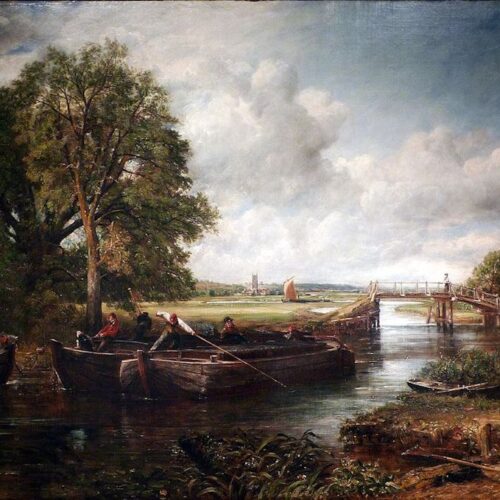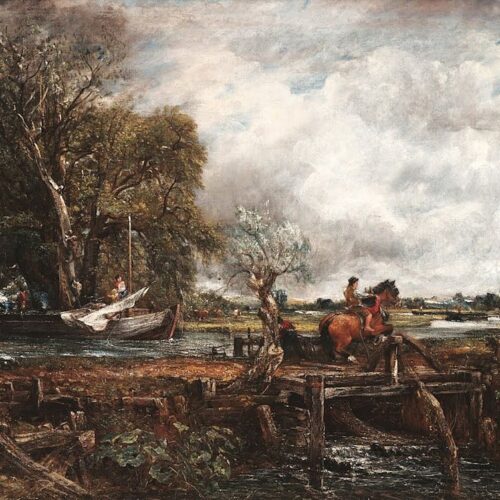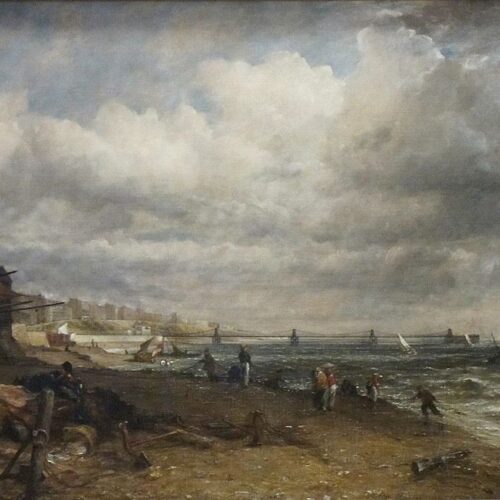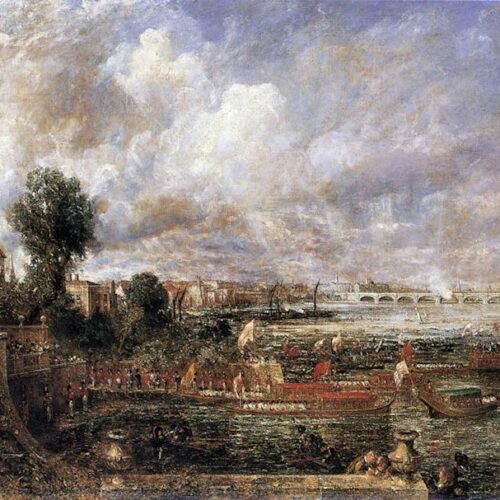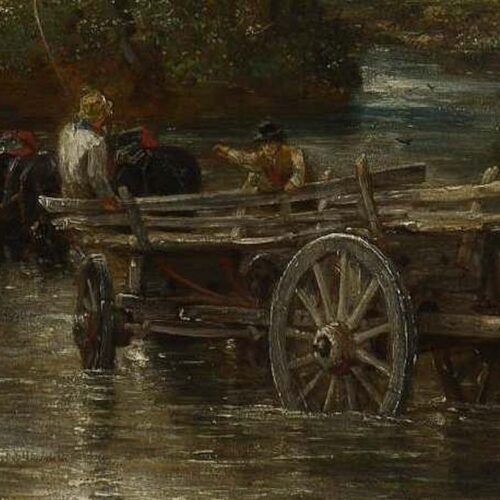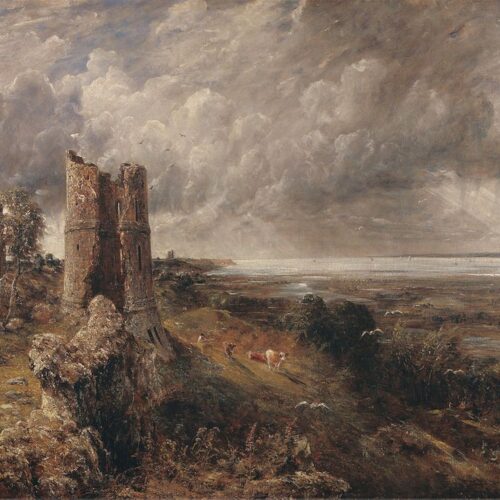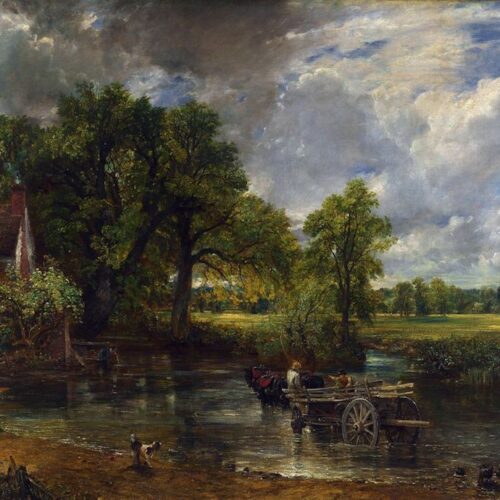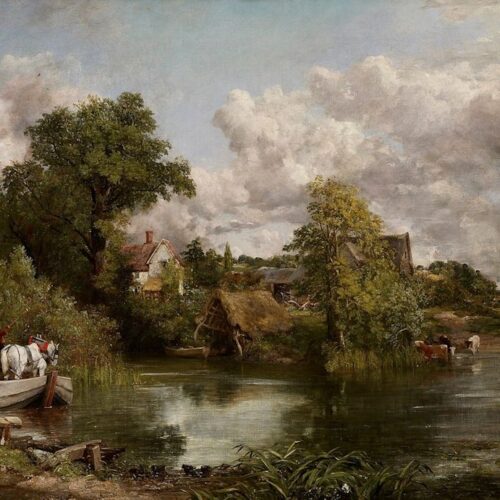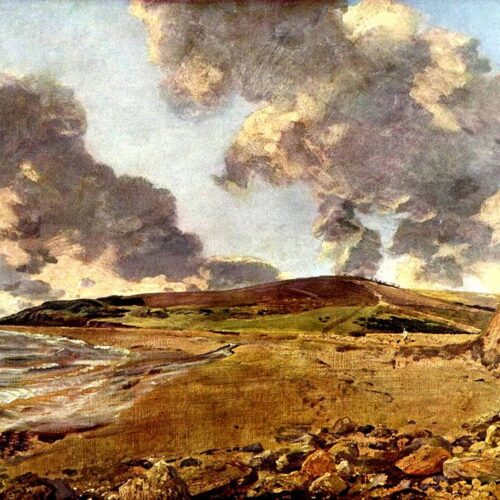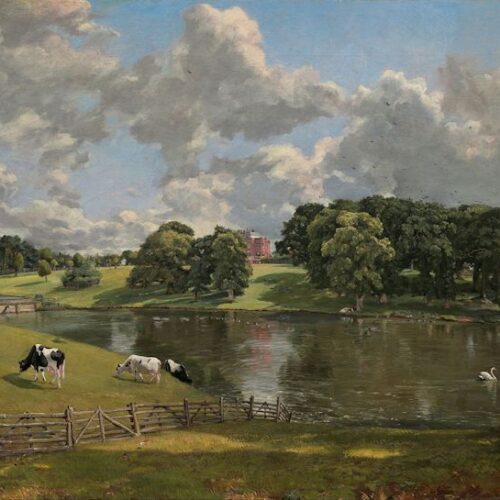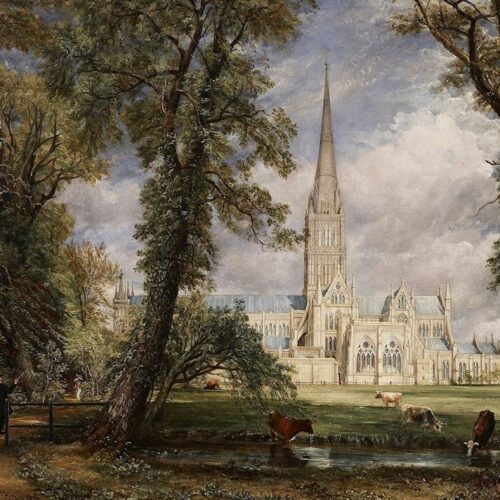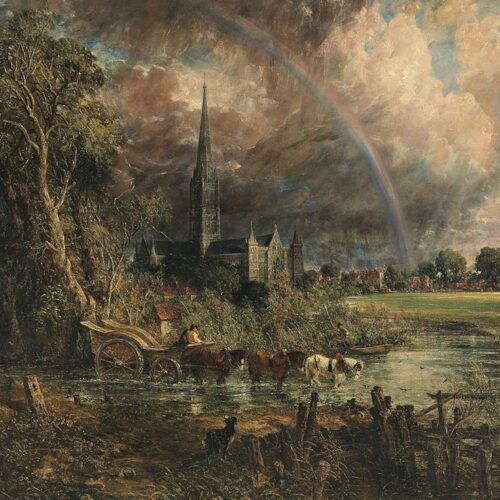|
ROMANTIC LANDSCAPE PAINTING The ‘vegetable glass of nature’ was just what appealed most to John Constable (1776-1837), who declared his ambition to be, above all, a ‘natural painter’. One of his most beautiful paintings of his native Vale of Dedham shows men at work on a dunghill. No painter ever represented the English countryside with greater fidelity, the sparkle of dew on grass, the glint of sunshine on sappy leaves, the noble form of great elms, the enthralling intricacies of the hedgerow, and as a result his paintings are very much more than straightforward topographical records. He sought to recapture in them a childhood vision of the harmony of nature in all its innocent purity and to re-examine it in the light of mature reflection – to use it as a touchstone against which all experience, of nature and art and his sense of being part of creation, might be tested. In this his affinity with William Wordsworth (1770-1850), whom he knew and whose profoundly reflective autobio-graphical poetry he loved, is very evident. Constable, the son of a fairly prosperous farmer and mill-owner, was brought up in the flat lands of East Anglia. His native landscape was not wild. It had been formed by the labour of his relations and their neighbours over many generations. He pret’erred painting man-made canals and dams, he said, to the mountain brooks and waterfalls that inspired Romantic poets.‘The sound of water escaping from mill-dams, etc., willows, old rotten planks, slimy posts and brickwork, I love such things’, Constable wrote in 1821. ‘As long as I do paint, I shall never cease to paint such places.’ In nearly all his pictures the land is worked. The dung which fertilized the fields, no less than the rain that watered them, the mills in which the grain was ground, the boats in which it was transported by canal to the city, all played their parts in the divine harmony of the physical world as he understood it. The tower of Dedham parish church recurs constantly in his Suffolk landscapes, a reminder rather than a symbol of the presence of God. In the picture illustrated here, he placed it immediately above the dunghill. |
Constable’s vision of the English landscape culminates in a series of seven large pictures – ‘six-foot canvases’ he called them – of scenes near his childhood home, a landscape so unspectacular that it had not previously heen thought worth recording at all. let alone on this grand scale. Each of them represents the harmony of the elements, epitoniized by the reflection of sky in water. The pulse-beat of the universe can he feit in the movement of the clouds, the ripples on the stream and the shimmer of leaves on the great trees as a summer hreeze passes over them, as well as in the bustle of human figures and animals. Each picture is centred on some workaday occurrence, sometimes of a slightly unexpected kind – a lumhering cart-horse rearing to leap a barrier, for instance – which links it with a particular moment of vision. In this way they form pictorial equivalents to the ‘spots of time’ of Wordsworth’s Ihc Prelude – those vividly remembered moments of childhood that ‘retain a renovating virtue’ and through which in later lifeour minds are nourished and invisiblv repaired . Constable prepared these pictures with great care, proceeding trom drawings to t’ull-size sketches. To modern eyes, the sketches strike first and deepest, by their apparent spontaneity and truth to nature, the bravura of handling, with heavily loaded brush-strokes and pigments dashed on and worked w-ith a palette knife, the bold massing of forms, the sparkling highlights and rich shadows. The quietly contemplative finished pictures seem deliberate, perhaps over-elaborated. But Constable would not have agreed. He wrote of a sketch as something which ‘will not serve more than one state of mind & will not serve to drink at again & again’. His six-foot sketches were attempts to recapture the original moment of vision, the finished pictures his mature reflections . The relationship is akin to that between a diary and an autobiography. |
